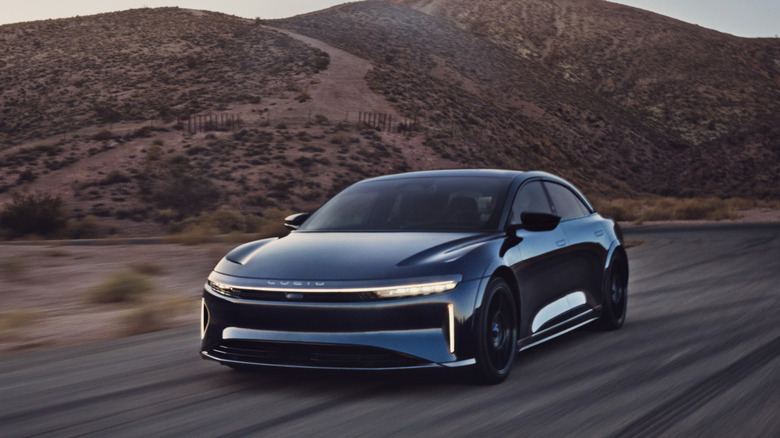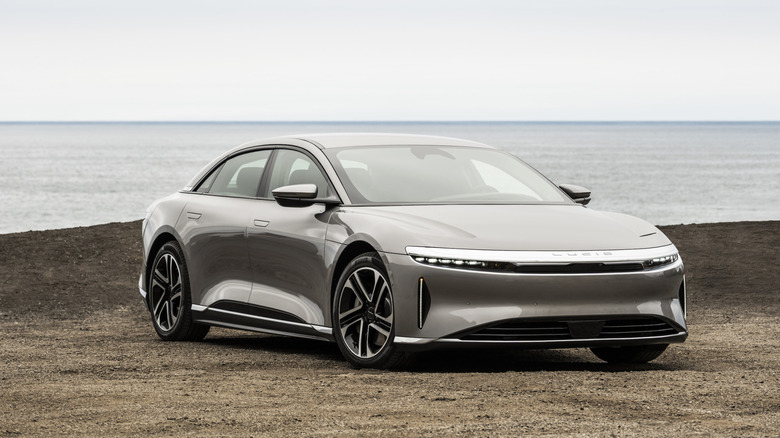How Does Speed Affect An Electric Vehicle's Range?
There are a lot of different factors that affect an electric vehicle's range. Battery size, outside temperature, tire size and type, aerodynamic efficiency, elevation changes, the combined weight of the occupants and cargo, and even wheel size can change the distance travelled between plug-ins. Just like cars powered by internal combustion engines, electric vehicles have to deal with forces like wind resistance, rolling resistance, and gravity when they're out on the road. And, just like internal combustion-powered cars, EVs have to use energy to travel quickly. In any kind of car, the faster you go, the more energy you consume.
Accelerating from a stop requires energy, whether that's gasoline or electricity, and so does driving down the road. At higher speeds, wind resistance (also known as aerodynamic drag) increases, and the amount of energy required to keep the car moving goes up, too. So, with your vehicle using more energy to maintain its pace, your range decreases with that added speed. Naturally, to achieve long-distance range records like the world-beating Lucid Air Grand Touring did, you need maximum battery power, ideal road conditions, and a slow-and-steady pace. Even though the Lucid has the best range estimate from the EPA in 2025, it still has to do battle with the forces of nature.
Just how bad is the range drop off?
Recently, Car and Driver performed a range test with three different vehicles to demonstrate how speed changed range in the real world. One of those vehicles was a Subaru Forester, included for comparison purposes, but the two EVs were a Lucid Air sedan and a Kia EV9 SUV. Both the Lucid Air and the EV9 have varying range estimates from the EPA depending on trim level, but both showed a dramatic difference between traveling at city speeds, highway speeds, and speeds that aren't exactly road legal.
At the relatively low speed of 35 mph, the Lucid Air that C&D tested showed a range of 485 miles. Move that up to 55 mph (a much more highway-friendly speed), and the on-board estimate dropped to 378 miles – over 100 miles of range lost. It's worth noting that these were on-board estimates and not tested range differences, but it's still a large drop off. Moving up to 75 mph, a speed that is pretty common on public highways, the Lucid's range decreased by another 23 percent. By our math, that's a range of just 291 miles. Go up to 95 mph in the Lucid, and it's another 24 percent drop in range — less than half the original range (221-ish miles). The less aerodynamic EV9 SUV had even more dramatic results, but both cars in the test proved the same point: if you want to go fast, it's gonna cost you more energy and a lot of range.

